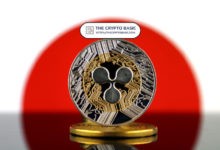Philippine’s Leading Crypto Exchange ‘Coins.ph’ Lists Shiba Inu (SHIB)

- Former chief financial officer of Binance, purchased Coins.ph in early April.
- Originally intended to list the meme coin on July 13, but the launch was delayed.
Acceptance of the Shiba Inu meme coin is increasing now that it has been listed on Coins.ph, a well-known Philippine cryptocurrency exchange. Currently, Coins.ph has more than 18 million registered users worldwide. This indicates that the dog-themed cryptocurrency can be used by this large number of people.
The so-called “Dogecoin-killer” Shiba Inu will be added to the crypto exchange’s current 20 cryptocurrencies. One of the country’s first cryptocurrency exchanges, Coins.ph, is still going strong today. The exchange, which was founded in 2014, moved its emphasis from traditional financial services to cryptocurrency.
Rising Popularity of SHIB Across the Globe
Coins.ph is the first company in Asia to get a license from the BSP as an Electronic Money Issuer and Virtual Currency Exchange (EMIVC). They claim to be “the most established crypto brand in the Philippines and has earned the confidence of over 18 million users.”
Several cryptocurrencies, as well as a wide range of financial services, may be purchased and sold using the app’s user-friendly interface on the local exchange. Wei Zhou, the former chief financial officer of Binance, purchased Coins.ph in early April after he left the crypto exchange giant in May last year for personal reasons.
Following a $95 million acquisition by an Indonesian technology business, the deal was completed three years later. The cryptocurrency exchange based in the Philippines had originally intended to list the meme coin on July 13, but the launch was delayed due to technical difficulties.
Bitstamp, Europe’s biggest cryptocurrency exchange, recently added Shiba Inu, as did Robinhood, a prominent trading platform. After losing about 85% of its value since hitting a new high in late October, SHIB is still No. 15 in terms of market capitalization on CMC.






 Bitcoin
Bitcoin  Ethereum
Ethereum  Tether
Tether  USDC
USDC  TRON
TRON  Dogecoin
Dogecoin  Cardano
Cardano  Bitcoin Cash
Bitcoin Cash  Chainlink
Chainlink  LEO Token
LEO Token  Monero
Monero  Stellar
Stellar  Zcash
Zcash  Litecoin
Litecoin  Hedera
Hedera  Dai
Dai  Cronos
Cronos  OKB
OKB  Tether Gold
Tether Gold  Ethereum Classic
Ethereum Classic  KuCoin
KuCoin  Gate
Gate  Algorand
Algorand  Cosmos Hub
Cosmos Hub  VeChain
VeChain  Dash
Dash  TrueUSD
TrueUSD  Tezos
Tezos  Stacks
Stacks  IOTA
IOTA  Basic Attention
Basic Attention  Theta Network
Theta Network  Decred
Decred  NEO
NEO  Synthetix
Synthetix  Qtum
Qtum  Ravencoin
Ravencoin  0x Protocol
0x Protocol  DigiByte
DigiByte  Zilliqa
Zilliqa  Nano
Nano  Numeraire
Numeraire  Siacoin
Siacoin  Waves
Waves  Ontology
Ontology  BUSD
BUSD  Status
Status  Enjin Coin
Enjin Coin  Pax Dollar
Pax Dollar  Hive
Hive  Lisk
Lisk  Steem
Steem  Huobi
Huobi  NEM
NEM  OMG Network
OMG Network  Bitcoin Gold
Bitcoin Gold  Augur
Augur  Ren
Ren  HUSD
HUSD